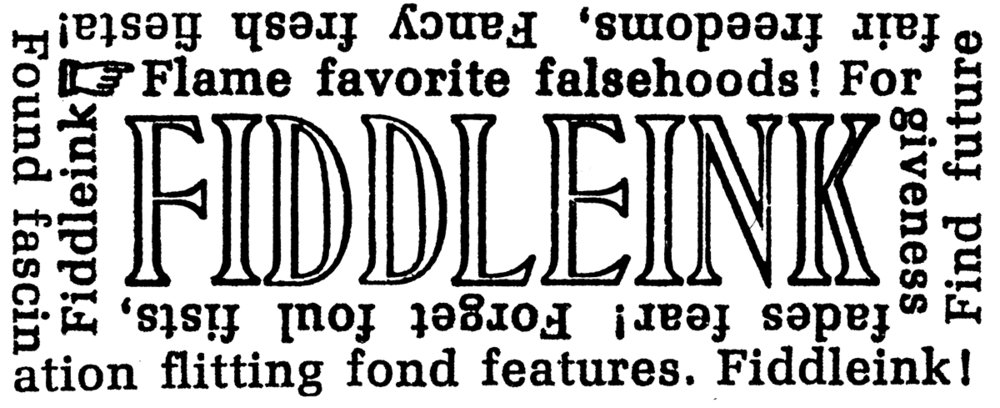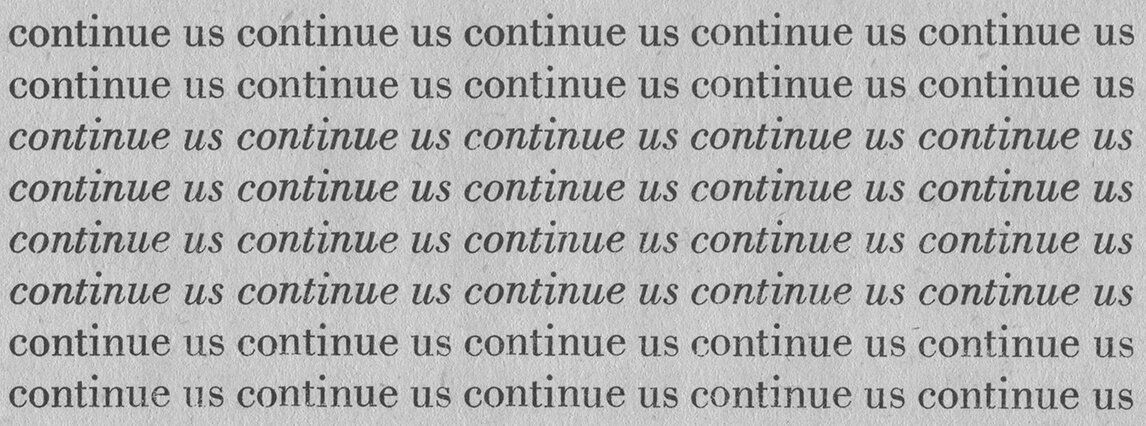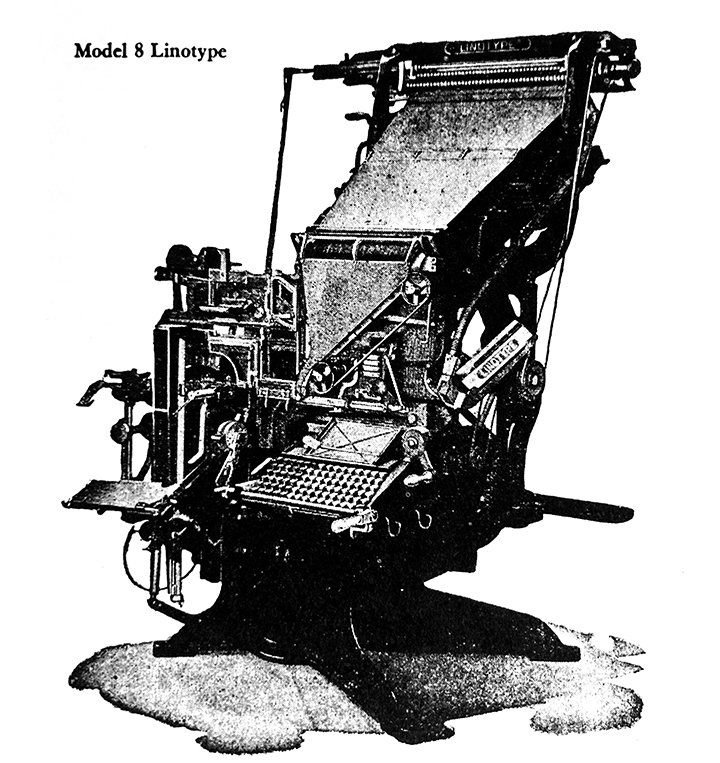Looks like Melvin's having some fun in this session. Nice sound quality, and nice camera angle to study Melvin's bowing. Posted by Bob White. If the above image does not play, click here to go directly to youtube. While you are there, check out more of Bob's channel - there's a lot of good stuff there. Thanks for posting, Bob!
Rediscovered video of Foghorn Stringband at the Cobblestone Pub in Dublin, back in 2006
I recently rediscovered DVDs containing Foghorn Stringband gigs in Ireland from back in 2006. This is first generation Foghorn Stringband; at the time the line up was: Stephen "Sammy" Lind - Fiddle, Caleb Klauder - Mandolin, The Reverend P.T. Grover, Jr. - Banjo, Kevin Sandri - Guitar, and myself on string bass. This clip was from a gig at the Cobblestone pub in Dublin, documented by Bill Whelan who was kind enough to send me a copy of the DVD way back when. Thanks, Bill! The Cobblestone was one of our favorite places to play - as I recall, we traveled from the states that day, and played the gig that evening. The tune in this clip is "Black Mountain Rag." Kevin was working on replacing a guitar string so the melody section started the tune. The Rhythm section jumps in mid way through the tune.
Photo from Vamp & Tramp, Booksellers
Linotype casting for Barbara Tetenbaum's "Old Friends in Nebraska; Mesostics on the introduction to My Antonia"
Photo from Vamp & Tramp, Booksellers
Earlier this year I had the opportunity to see Barbara Tetenbaum's completed artist book "Old Friends in Nebraska; Mesostics on the introduction to My Antonia" which included Linotype composition which I had set and cast at Stumptown Printers shortly before we moved out of the Interstate Avenue shop space. Barb and I had proofed several faces before settling on 10 point 496 Caledonia.
From the perspective of Linotype composition, the mesostic form requires an unconventional alignment — the text is arranged so that a vertical phrase intersects lines of horizontal text. I first attempted to hand-insert thin spaces while keeping a close eye on the assembler slide em scale to achieve the alignment. It didn't work. It was labor intensive and provided less than ideal results. I settled on a more time intensive though much more reliable method, which was to employ the machine's quadder and the Hammond glider saw. Each line was cast twice with left and then right alignment, and trimmed to form the single “mesostic” aligned line. This allowed for more controlled letter spacing, in which a half point at a time could be cut with the saw.
The finished piece is beautiful and meticulously printed. I’m happy that the Linotype composition made the cut! Below are photos of the casting and proofing process.
Poetry Fire
Poetry Fire! This poster hangs on the backside of our garage in the window facing out towards our backyard. Printed in an edition of 8 or so, set in Kabel wood type and hand inked, it was designed to catch the attention of one person for whom the event was for. That is, my partner Rebecca. We were looking for an excuse to reacquaint ourselves with the poetry chapbooks sitting on our shelves in the house. So, during our first-stage* covid-lock-down-backyard-hang-outs (the two of us) we'd read poetry aloud around the backyard fire pit. We made a cocktail for the event as well. Recipe below.
Poetry Fire Cocktail
2 oz bourbon
1 oz lemon juice
¾ oz maple syrup
2 pinches fresh grated ginger
*During the first-stage of the pandemic, when very little was known about the Coronavirus - it was rumored that people could be stricken instantly with the bug, and drop dead to the sidewalk with no warning (remember that? yes, during the early months of 2020 this tale had traction). At this time the idea of transmission through aerosols was down-played, and the focus was on transmission through touch. At work we wore gloves, but didn’t wear masks. Impenetrable objects could host the virus for 72 hours or more, so you better not touch anything. That was the thought. Anyway, it was during this time that a lot of the world shut down. It was quiet. People were scared. The lock-down was on. Most people didn’t report to their workplaces in person. I was one of the folks who worked in-person with my colleagues as essential workers at the light rail train-yard. My brother was also one of the “essentials” showing up every night at the waste water treatment plant. People who turned wrenches, people who drove trucks, people who worked in the business of making food, moving food, delivering food, selling food, people who monitored systems of civilization did not slow their pace. At the time, many people who didn't work those types of jobs and who were sent home to hunker down recognized the importance of these “essential” jobs. Where would we be if we couldn’t go to the local market to pick up supplies? What would happen if while the rest of the city were shut down, my water, sewage and electricity was turned off because there weren’t workers monitoring those systems? Yeah, the essential workers were recognized. It was a sentiment that was very short lived. Anyway, I'll steer away from the bitter tone here. Perhaps another time will be appropriate to expound on those thoughts. Regardless, it was an interesting time, and Poetry Fire was born out of the surreal lock-down days.
C.C. Stern Type Foundry During Quarantine
Rebecca and I checked in on the Foundry last weekend, and fired up some machines while we were there. Rebecca continued casting type for "The Point" which exercised the monotype composition caster with Welliver interface, and I warmed up the model 31 and cast a galley of linotype slugs for an exercise normally meant for public open hours (see previous post). It was nice to be in the space after being away from it for over a month. We're looking forward to resuming regular programming when it is safe to do so. For the most current C.C. Stern Foundry news, here's a link to a recent newsletter.
IDK
A continuation of an exercise to explore the meaning of acronyms found in online and text communication. Jeff provided me with a list of them. This list lives on top of the Linotype keyboard. I've had to search for the meaning of some of the listed acronyms multiple times. Instead of committing their meaning to memory, I prefer to make up my own meanings, and then forget those. Anyway, this exercise also serves as the framework to take a deep dive into one single type face: 14pt Intertype Bodoni Book 961. I enjoy the constraints. One typeface, a limit of 4 hours (the normal duration of open hours at the C.C. Stern Type Foundry) and an acronym that I don't understand. "IDK" will be the 4th print in this acronym-type-specimen exercise.
"Shelvin' Rock" played by Ernie Carpenter and Michael Kline at the 1982 Vandalia Gathering
One of my favorite tunes and fiddler. I haven't seen much video/film documentation of Ernie - it was a nice surprise to find this on youtube. Thanks to West Virginia Department of Arts, Culture and History for making this available to the public through their West Virginia State Archives Music Channel.
Continue Us Belly Band Final
"Continue Us" Belly Band (or OBI strip) complete and in place. "Continue Us" by Marko Whens is an exercise book of poems. Edition of 72. Pages printed on newsprint. Composition Linotype.
Continue Us proof
Pictured above is a proof of type cast for “Continue us” by Marko Whens. These Linotype slugs were used to print a “belly band” for Marko’s exercise book of poems. Completed in 2019. More info and documentation soon….
Train of thought
Train of thought. It's 3:38 AM, on my day off from the train yard. In true old-school-blog spirit, I'm writing the thoughts as they enter my brain. No editing between the brain and the fingers. For that I'm sorry. But also, thank you. You are helping me out. At this hour, there's not much to do. Thanks for reading. I'm putting in the time so when I return to my shift tomorrow night, I won't be too discombobulated (I don't believe I've typed "discombobulated" in quite a while, if ever) as a result of going to bed early. So I'm shooting for a 4:00 AM beddy-bobo time. Which is still early, but probably close enough. Man, night shift can rough. So I'm here at this site, taking a look around. Dusting stuff off. See if I can still work this Squarespace site. I've been meaning to re-engage. I've been missing my distant print pals. I've got a lot of catching up to do. Stories to tell. Ink to share. Type to share. Stories about the C.C. Stern Type Foundry and about our mini-shop shop in the garage. Stories about visits from printing pals. Stories about fiddles and fiddle tunes. I'll save the train yard stories for another platform, or for when I see you in person. It's been close to a year-and-a-half working the graveyard shift. I don't think I'll ever get fully acclimated to this schedule, but it has finally been a bit more manageable of late. Which means I've been pulling out the galleys and the print work. I hope to share some of it with you soon. Also, I've been enjoying and inspired by some fantastic work that you all have been making. Keep it up. Cheers!
Mother Foucault's August 2018 Events Calendar
Way back when, Mother Foucault's bookshop had their events calendar composed and printed using Linotype matter. That was way back in '18. 2018. Okay, it happened twice. For July, and the one pictured here for August. Craig dropped off his handwritten notes, I then clipped the notes to the Linotype copy tray, and there it would sit for several days while job work was being completed. One midnight, Craig showed up unannounced while I was just getting started on the August events calendar. It must have been the middle of August at that point. He was good natured about the delay, but that was the last time I printed the bookshop's event calendar. I don't know if this one ever saw the light of day. So I'm posting pics of it now. This edition included Edwin Rolfe's "A poem to delight my friends who laugh at science fiction" which seems at home on newsprint, and which I enjoy reading again and again. The type is Linotype 8^502 Excelsior with Memphis Bold. Edition of 300. Printed on newsprint.
Space Band box needs some attention
I took this pic while at the C.C. Stern Type Foundry board members’ work session. Chris Chen was in town, so the focus was on the comp caster. Exciting stuff was happening over there at the comp machine, but too many board members around the type metal spoils the alloy. Or at least that was my theory that day. So Linotype house cleaning was my strategy. Number 4 spacebands have occasionally been hanging up at the top of the box and not sliding into place. After some cleaning and an added shim, the choke point was alleviated. Not entirely fixed, but certainly an improvement.
Clips taken during C.C. Stern Type Foundry open hours
A random collection of video clips taken in 2018 - 2019 during C.C. Stern Type Foundry open hours. This was compiled rather quickly on a phone for the occasion of the College Book Art Association (CBAA) 2020 Conference held in New Orleans, Louisiana January 2–4, 2020
Craft Printing House
Craft Printing House is starting to feel like a home. This is the garage shop. The tiny garage shop. Rebecca and I have been printing and carefully staying out of each other's way while doing so for about a year now. Currently we are producing limited amount of commercial work for Stumptown Printers' customers, while creating an equal amount of prints for print's sake. It's nice to bring printing back home.
A fiddle tune....
I recently re-discovered this video - it dates back to 2008. It’s a sweet moment captured en-route to a gig on Vancouver island. Sammy reminded me of the name of the tune: Irish Polka. Good choice for that mellow morning ferry ride.
Linotype Machine Cycle
Ah, yes – the old white-out-on-the-cam trick - used in this case to determine where (or if) the cam follower comes in contact with this section of the cam… This is an old video, I don’t recall the issue with the machine. But I do enjoy watching that cam cluster roll, and am happily reminded of why old bottles of white-out are scattered around the shop.
Linotype Machines in the News July 5th, 2019
Linotype Machines in the news! Found today within an article published by The Sherbrooke Record (Quebec). The full article is behind a paywall, and it appears that only recent articles are accessible. However, notable within this article introduction is a pic of Jean Doucet who was the first female linotypist at The Sherbrooke Record. Also of interest, a picture of two mystery typecasting machines. I don't recall having seen a machine quite like this. Can you identify them?
Lintoype Machines in the news November 22, 2019
Today's "Linotype Machine in the news" is a short little remembrance by columnist Tom Garrett of the Payson Roundup in Arizona entitled: "It's amazing how much easier it is to print a newspaper today." Tom describes a sense of wonder when he first encountered a Lintoype Machine while a student working at his local newspaper. He does a good job capturing the sights, sounds and ambience of the press room back in the late 1940s. Picture above is not from the article. It's taken from Abel and Straw's Mechanism of the Linotype and Intertype.
Linotype Machines in the News November 21, 2019
This edition of “Linotype Macines in the News” commemorates Margaret 'Peg' Champney of Yellow Springs, Ohio who worked at the local newspaper for 68 years. It mentions Linotype operation only briefly - maintenance and operation of a line caster was just one of the jobs that Mrs. Champney was responsible for during her tenure at the paper. I was born in Xenia, Ohio just 10 miles south of Yellow Springs, so I found this article particularly interesting. As my brother and I were coming up, we viewed this town as a tiny oasis. Due in part to the sizable student population of Yellow Springs, a visit to Yellow Springs offered new perspective. For us it served as a lens that focused on the distant horizons beyond the corn fields and nearby Dayton, Ohio's industrial cityscape. It was and is a special place. I recall picking up the Yellow Springs News on several occasions, and even remember visiting the office a couple of times. So it was a treat to read this story about Peg's career, and to gain some insight on how this small town paper contributed to the unique culture of Yellow Springs. Her story is an inspiring one. Her strength, independence and dedication to the mission of the free press undoubtedly influenced many of us who directly or indirectly crossed her path, whether we were aware of it or not!
Linotype Machines in the News November 9th, 2019
This Linotype Machine news is not about the machine, but it is about the legend and legacy of the man who invented it. This short article discusses Linotype Machine inventor Ottmar Mergenthlar's grandson George Mergenthaler who was killed while fighting in WWII. An interesting bit from the article: "When his grandfather Ottmar died in 1899 the family was worth $43 million." That's news to me. I had the idea that Ottmar died a heart-broken man, who due to business decisions was pushed out of the company that he built. I also was left with the idea that he was swindled out of equity in the business, but $43 million in 1899 would certainly indicate otherwise.
Published by Rockland/Westchester Journal News and written by David Propper































